


xxxxxThe Frenchman
Guy de Maupassant, assisted and encouraged over many years by the
famous novelist Gustave Flaubert, gained overnight fame in 1880 with his short story Boule de Suif (Suet
Dumpling). Over the next ten years he produced over 200
short stories and six novels, the vast majority based on his own
lifetime experiences -
GUY DE MAUPASSANT 1850 -
Acknowledgement
Maupassant: by the
French engraver Victor Augustin Michel (1828-
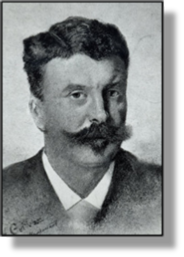
xxxxxThe French
writer Guy de Maupassant, one of literature’s greatest masters of
the short story, was born at the Château de Miromesnil, near
Dieppe, Normandy. His parents separated when he was eleven, and he
then lived with his mother, a learned woman to whom he was deeply
devoted. He attended a seminary at Yvetot for a short time -
xxxxxIn 1869 he
went to Paris to study law, but his studies were interrupted when
the Franco-
xxxxxFlaubert,
an old friend of the family, had known the young Maupassant since
the age of 17, and had been asked to keep an eye on him.
Whenever he was in Paris he would invite him for Sunday lunch and
make sure that he attended the literary gatherings he held at his
home. As a result, Maupassant met the likes of Émile
Zola, Ivan Turgenev, Edmond de Goncourt
and Alphonse Daudet, and began to consider a career as a writer.
At first his attempts at putting pen to paper did not impress, but
Flaubert saw that he had talent and continued to correct his work
and advise him on content and style. Indeed, so close did their
friendship become that there grew up between the two men an almost
father-
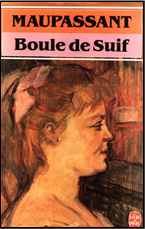 xxxxxEventually, Flaubert’s training and Maupassant’s
latent talent brought the success both men deserved. April 1880 saw the publication of his Boule
de Suif, one of a collection of six short stories, edited
by Zola and intended to provide non-
xxxxxEventually, Flaubert’s training and Maupassant’s
latent talent brought the success both men deserved. April 1880 saw the publication of his Boule
de Suif, one of a collection of six short stories, edited
by Zola and intended to provide non-
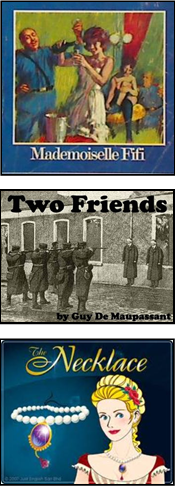
xxxxxDuring the
next ten years Maupassant published over 200 short stories, six
novels, three travel books, and a volume of verse. His short
stories, produced at a rate of two to four each year, included the
collections La Maison Tellier of 1881,
Mademoiselle Fifi of 1882 and Miss
Harriet of 1884. Among his well-
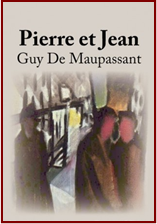
xxxxxFor the
most part, these stories and novels are drawn directly from his
own experiences, but they provide, at the same time, a very full
picture of French life in general during the latter part of the
19th century. A number of his tales are taken from his childhood
days in Normandy, and the Franco-
xxxxxHis success
as a writer owed much to his acute powers of observation,
supported by an almost photographic memory. This enabled him to
create not only life-
xxxxxApart from
his literary talent, Maupassant was a good business man, and he
made sure that he prospered from his hard work. His new-
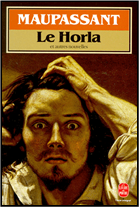
xxxxxBut by the late 1880s the syphilis Maupassant had contracted in his youth began to take its toll, exacerbated by the death of his brother from the same disease in 1889. Constantly haunted by the fear of his own death, he became increasingly deranged. In January 1892 he attempted suicide by cutting his throat and was committed to a private asylum at Passy in Paris. He died there just over a year later, aged 42, and was buried in the Cimetière du Montparnasse.
xxxxxOne of the creators, if not the inventor, of the modern short story, Maupassant was a master of observation and plot. Writers on both sides of the Atlantic learnt from his style, took him as a model, and even adapted some of his stories. Among these were the Americans Henry James and O. Henry, and the Englishman Somerset Maugham.
xxxxxIncidentally, Gustave Flaubert hailed Boule
de Suif as “a masterpiece that will endure”. He thought
highly of Maupassant. “He is my disciple, “ he wrote, “and I love
him like a son”. For his part, Maupassant, the child of a broken
marriage, saw Flaubert as a father figure. He was devastated at
Flaubert’s sudden and unexpected death in 1880, just a month after
the publication of the work which la unched
him on his literary career. ……
unched
him on his literary career. ……
xxxxx…… Maupassant was one of a number of Parisians who hated the Eiffel Tower, completed in 1889. It is said that he used to frequent the restaurant at the foot of the tower so that he did not have to look at it while eating his lunch!
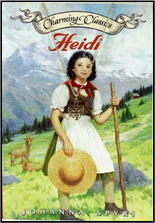 xxxxxItxwas in 1880
that the much loved Heide was
published. Written by the Swiss author of children’s stories Johanna Spyri (1827-
xxxxxItxwas in 1880
that the much loved Heide was
published. Written by the Swiss author of children’s stories Johanna Spyri (1827-
Vb-


